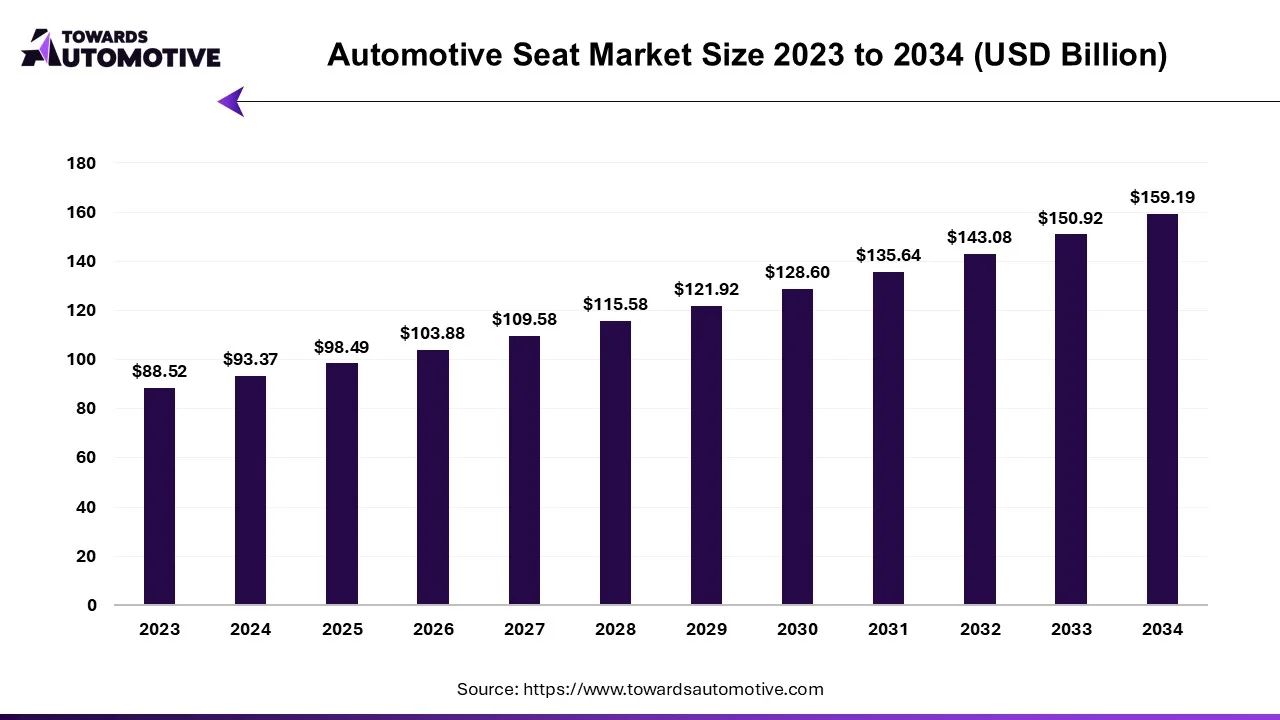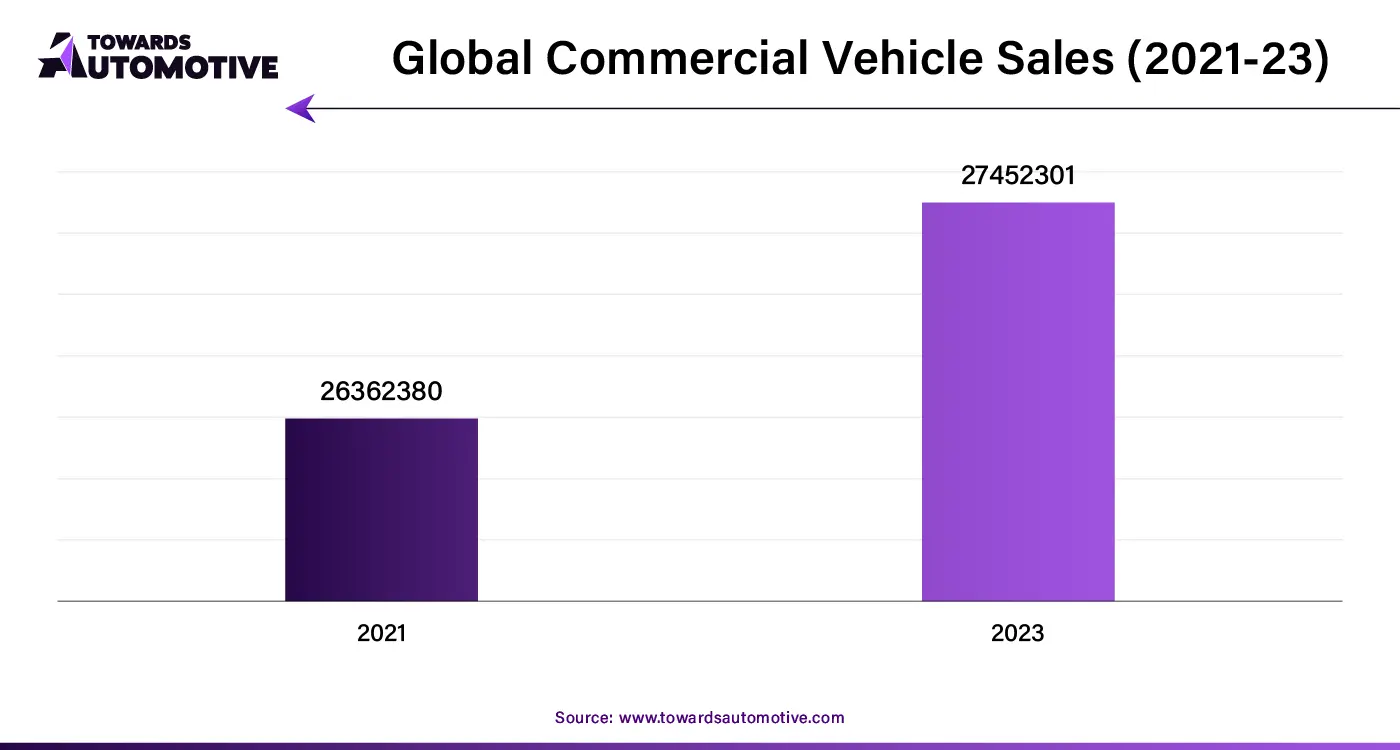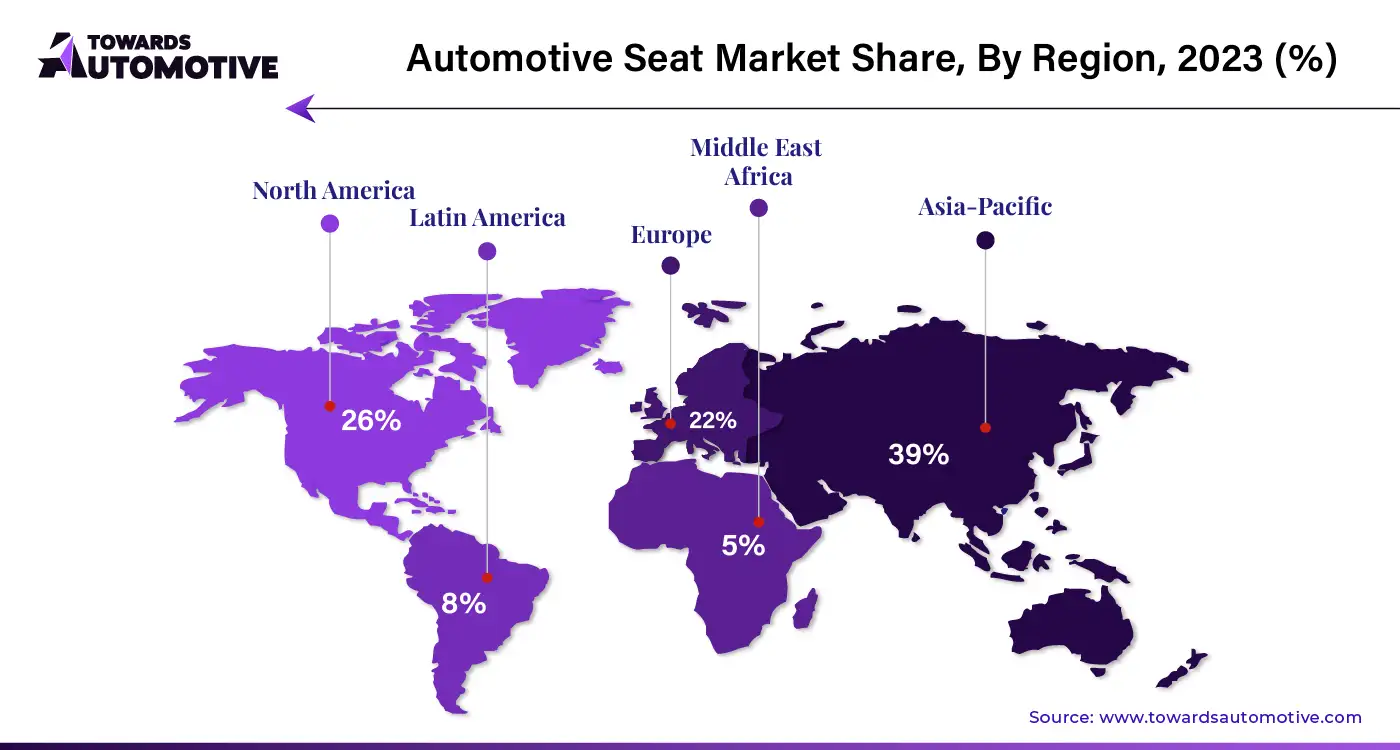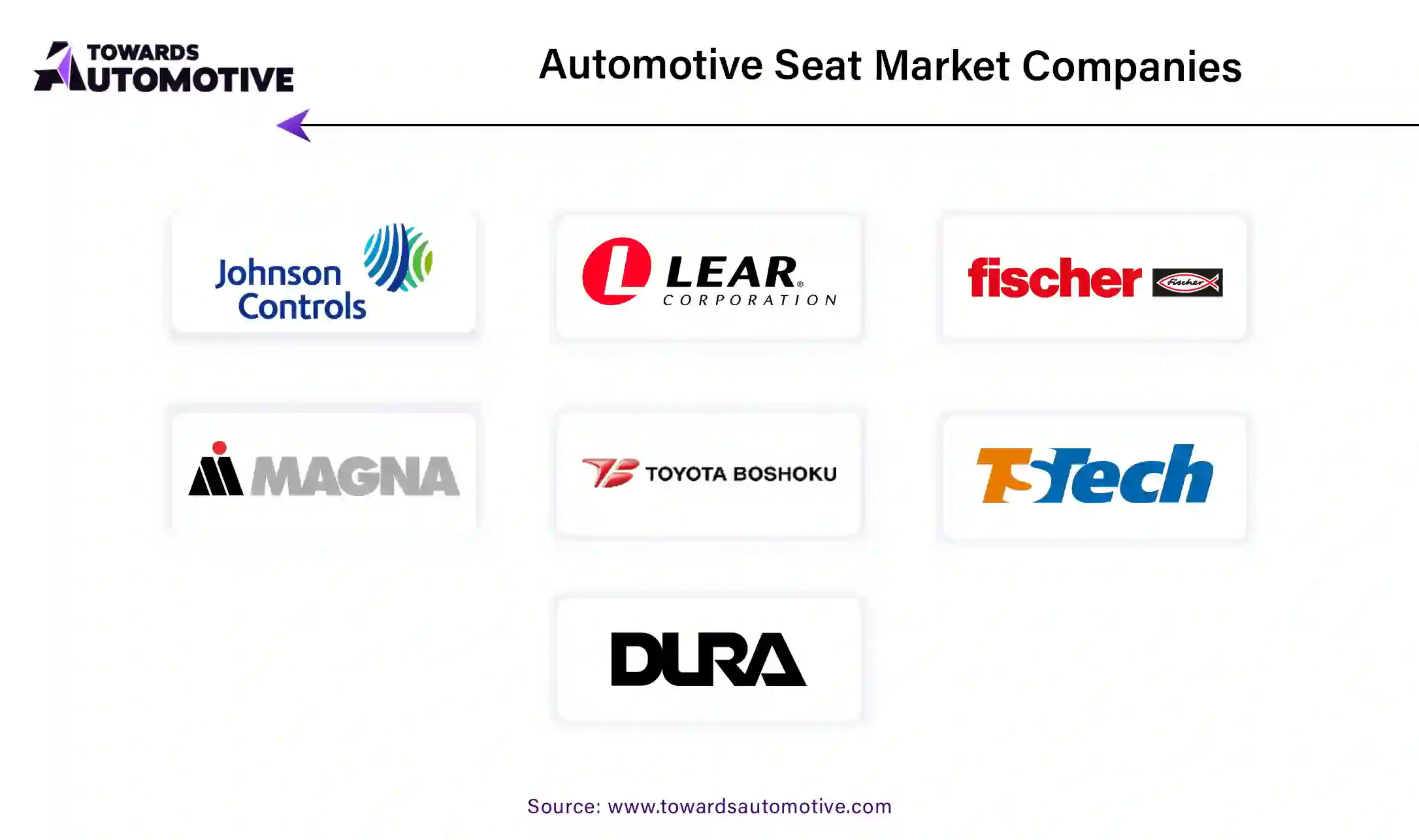April 2025
The global automotive seat market is forecasted to expand from USD 98.49 billion in 2025 to USD 159.19 billion by 2034, growing at a CAGR of 5.48% from 2025 to 2034.

Unlock Infinite Advantages: Subscribe to Annual Membership
The automotive seat market is a vital component of the global automotive industry, encompassing a wide range of products designed to provide comfort, safety, and aesthetic appeal for passengers. Seats in vehicles are no longer merely functional; they have evolved into advanced systems that combine cutting-edge technologies, ergonomic design, and customization options to enhance the overall driving experience. The automotive seat market includes seats for various vehicle types, including passenger cars, commercial vehicles, and electric vehicles, with growth driven by increasing consumer demand for comfort, safety, and convenience.
Technological advancements have significantly transformed automotive seating, with innovations such as heated and cooled seats, memory foam cushions, massage features, and seat adjustability taking center stage. The increasing focus on vehicle safety has also led to the integration of advanced safety features such as side-impact airbags, seatbelt pre-tensioners, and whiplash protection systems. Additionally, the rise in environmental consciousness has driven the demand for sustainable and lightweight materials in automotive seat production, such as recycled fabrics, biodegradable foams, and lightweight metals.
As the automotive industry continues to evolve, the automotive seat market is expected to experience significant growth, driven by factors such as the rising production of electric vehicles, the demand for luxury cars, and growing consumer expectations for personalized, high-quality seating. The market's expansion is also being fueled by innovations in materials, design, and manufacturing processes, providing manufacturers with opportunities to meet the diverse needs of consumers worldwide.
Artificial Intelligence (AI) plays an increasingly pivotal role in transforming the automotive seat market by enhancing seat design, improving comfort, safety, and providing advanced customization options. AI technologies are being used to create more adaptive and personalized seating experiences for drivers and passengers. For instance, AI-powered systems can analyze driver and passenger data, such as posture and preferences, to automatically adjust the seat for maximum comfort, even accounting for factors like body temperature, seat angle, and lumbar support. This integration of AI not only improves comfort but also promotes better ergonomics, reducing long-term health risks associated with poor posture during extended periods of driving.
AI is also instrumental in enhancing safety features within automotive seats. AI-driven systems can monitor the driver’s seat position and adjust airbags and seatbelt tensioning accordingly, ensuring optimal protection in the event of a collision. Additionally, AI algorithms can predict and mitigate the risk of whiplash or side-impact injuries by adjusting seat positioning based on real-time data from sensors embedded in the seat.
Furthermore, AI helps streamline manufacturing processes, enabling more precise and efficient production of seats. AI-based predictive analytics can optimize material usage, reduce waste, and enhance quality control, making the production process more sustainable and cost-effective. As consumer demand for personalized, high-tech, and comfortable seating options grows, AI's role in the automotive seat market will continue to expand, driving innovations that enhance both vehicle performance and passenger satisfaction.
The rising demand for commercial vehicles is significantly driving the growth of the automotive seat market, as these vehicles require specialized seating solutions to ensure comfort, durability, and safety for drivers and passengers. With the expansion of global trade, increased transportation needs, and growing logistics industries, the demand for commercial vehicles such as trucks, buses, and vans has surged. Commercial vehicles often operate for long hours, making comfort and ergonomic design a critical factor in seat selection. As a result, there is a growing need for advanced seating technologies in these vehicles, including seats that offer adjustable lumbar support, air cushioning, and enhanced safety features like integrated airbags and seatbelt pre-tensioners. Additionally, the shift towards electric commercial vehicles (EVs) is driving the adoption of lightweight materials and eco-friendly seat designs, further expanding opportunities in the market. The growing focus on driver safety and vehicle performance has also led to the integration of smart technologies such as fatigue detection and real-time monitoring systems into commercial vehicle seats. These innovations not only enhance driver well-being but also improve operational efficiency by reducing accidents and downtime. As the demand for commercial vehicles is increasing rapidly, the automotive seat market is expected to rise significantly in present times.

The automotive seat market faces several restraints, including high production costs driven by advanced materials, technology integration, and safety features. Premium seat functionalities, such as heated, ventilated, and memory foam seats, significantly increase manufacturing expenses, which can limit affordability and adoption. Additionally, fluctuating raw material prices and supply chain disruptions, such as those caused by global economic factors, can impact production timelines and costs. Stringent regulatory requirements, including safety and environmental standards, also pose challenges, as manufacturers must invest in compliance, which can delay product development and increase operational costs. These factors collectively hinder the market growth.
The adoption of bio-based materials is creating significant opportunities in the automotive seat market, driven by growing consumer demand for sustainable and eco-friendly solutions. As environmental concerns become more prevalent, automakers are increasingly turning to bio-based materials such as plant-based foams, natural fibers, and recycled plastics to reduce their carbon footprint and promote sustainability. These materials not only help decrease the environmental impact of vehicle manufacturing but also meet the rising consumer preference for green products. The use of bio-based materials in automotive seats offers multiple benefits, including reduced weight, improved fuel efficiency, and enhanced recyclability, aligning with the broader industry trend toward lightweighting and sustainability.
Additionally, advancements in bio-based technologies have led to the development of more durable and comfortable materials that can perform at par with traditional, petroleum-based options. This shift is also supported by stricter regulatory requirements regarding emissions and material sourcing, pushing manufacturers to explore alternative materials that comply with environmental standards. Moreover, the adoption of bio-based materials can differentiate automakers in a competitive market, appealing to environmentally conscious consumers. As a result, the increasing use of renewable resources in automotive seat production is expected to contribute to the market's growth, offering innovative and eco-friendly solutions for the automotive industry.
The bucket segment led the industry. The bucket seat segment plays a significant role in driving the growth of the automotive seat market, particularly due to its widespread adoption in both luxury and performance vehicles. Bucket seats, known for their individual, contoured design that provides enhanced support and comfort, are highly sought after by consumers looking for a more personalized and ergonomic seating experience. The growing demand for comfort and safety features in vehicles, especially in sports cars, SUVs, and high-end sedans, is contributing to the rise of bucket seats in the market. Additionally, the increasing popularity of performance vehicles, which prioritize driver and passenger comfort, is further driving the demand for these seats. Bucket seats are often equipped with advanced features such as lumbar support, adjustable seating, and heating or cooling functions, making them highly desirable for consumers seeking a premium driving experience. Furthermore, the growing focus on vehicle safety has led to the integration of side-impact airbags and seatbelt pre-tensioners into bucket seats, enhancing their appeal. As consumer preferences shift towards more comfortable, supportive, and aesthetically pleasing seating solutions, the bucket seat segment is expected to continue to expand, contributing to the overall growth of the automotive seat market globally.
The passenger car segment dominated the market. The passenger car segment plays a pivotal role in driving the growth of the automotive seat market, primarily due to the large volume of vehicles produced and sold globally. As the most widely purchased vehicle type, passenger cars account for a significant portion of the overall demand for automotive seats. With rising consumer expectations for comfort, safety, and advanced features, the demand for high-quality, ergonomic seats in passenger cars has surged. Consumers are increasingly seeking seats with features such as memory foam, adjustable settings, lumbar support, and heating or cooling functions, all of which enhance the driving experience. Additionally, as automakers integrate more advanced technologies into their vehicles, seats are becoming more intelligent, offering features like biometric sensors that can adapt to individual preferences. Safety features like side airbags, seatbelt pre-tensioners, and active headrests are also becoming standard, driving growth in the passenger car seat market. The shift towards electric vehicles (EVs) and the development of autonomous vehicles further contribute to this growth, as these cars often require innovative seat designs to accommodate changing passenger needs. With passenger cars consistently accounting for a large share of automotive sales, the demand for seats that combine comfort, safety, and cutting-edge technologies will continue to fuel the automotive seat market's expansion.
Asia Pacific dominated the automotive seat market. The growth of the automotive seat market in the Asia-Pacific (APAC) region is significantly driven by rising vehicle production and sales, growing demand for comfort and safety, and increasing regulatory standards and compliance. As the middle class expands across key markets such as China, India, and Southeast Asia, there is a marked increase in vehicle production to meet the rising demand for personal transportation. This surge in vehicle production directly translates to a higher demand for automotive seats, fueling the growth of the market. Simultaneously, consumers in APAC are becoming more discerning, with a strong preference for comfort and safety features in their vehicles. Automotive seats are now expected to offer advanced features like heated and ventilated seating, memory foam cushions, and power-adjustable seats, all contributing to a superior driving experience. Additionally, as vehicle safety becomes a priority, manufacturers are integrating advanced seat technologies such as side-impact airbags, seatbelt pre-tensioners, and whiplash protection systems, aligning with consumer demand for better protection. Furthermore, stricter government regulations and safety standards in APAC countries, particularly with regard to crash safety, emissions, and materials used in vehicle construction, are forcing automakers to innovate in their seat designs. Compliance with these regulations often requires the integration of new technologies, materials, and safety features, driving further growth in the automotive seat market.

North America is expected to grow with the highest CAGR during the forecast period. The growth of autonomous vehicles, the increase in electric vehicle (EV) adoption, and technological advancements are key drivers of the automotive seat market in North America. The rise of autonomous vehicles is reshaping automotive seating by pushing the demand for more versatile, flexible, and comfortable seating solutions. In autonomous vehicles, traditional seating configurations are evolving to accommodate more relaxed postures, with features such as reclining seats, swivel functions, and adaptive lumbar support becoming increasingly popular. This shift in vehicle design is creating significant demand for innovative seat technologies. The increase in EV adoption also plays a crucial role in driving market growth. As EVs focus on efficiency and sustainability, manufacturers are turning to lightweight and eco-friendly materials, such as carbon fiber and recycled fabrics, for their seats to reduce overall vehicle weight and increase energy efficiency. This trend is particularly prominent in North America, where consumers are increasingly opting for environmentally conscious vehicles. Furthermore, continuous technological advancements in seat design, such as AI-powered seat adjustments, biometric sensors, and smart materials, are enhancing the comfort, safety, and customization of automotive seating.

By Seat
By Vehicle Energy
By Material
By Vehicle Type
By Region
April 2025
April 2025
April 2025
April 2025
We offer automotive expertise for market projections and customizable research, adaptable to diverse strategic approaches.
Contact Us